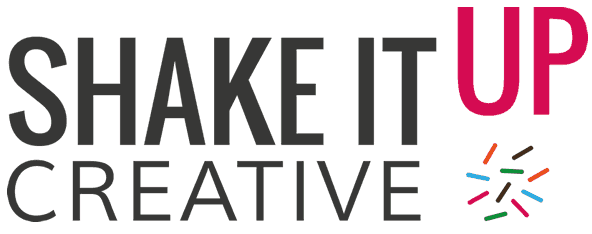A logo alone is not a brand but it does form part of your brand identity.

In advertising, the often discussed ‘rule of 7’ theory, suggests someone must see your brand seven times before it starts to be remembered and a powerful brand identity means you can recognise the brand even if you don’t see the logo. That might sound confusing but try and think about images that convey what a product or service is which don’t include the main company brand logo. Examples that spring to our minds include the Amazon arrow. The Amazon arrow which is synonymous with Amazon’s mail order service and when seen with their shopping basket icon is immediately recognisable as Amazon’s shopping basket. Think Tiffany & Co., often we can’t instantly remember the Tiffany logo but love the exquisite blue gift packaging. Those wonderful blue boxes mean high-quality Tiffany & Co. jewellery to us. Another example, the swoosh is synonymous with Nike. And remember all those captivating creative adverts at Christmas – you can tell which supermarket it is by the style and the fonts used, way before the strapline and logo appear.
Brand identity is a unique set of brand associations which represent what the brand stands for. Taking the blue Tiffany & Co. box as an example of a powerful brand messenger – you know it’s jewellery, but just imagine finding a different company’s item of jewellery was being given to you in a Tiffany box. Wouldn’t that be disappointing? The promise of the little blue box is one of luxury design, style and quality, all wrapped up with love. The #littlebluebox sparks an emotion and the expectation on opening it is one of a luxury jewellery gift. Same goes for underwear served in a cardboard bag with fragrant pearls and tissue paper – it’s still underwear when you get it home, but it feels luxurious – a treat for yourself.

Brand image is about how the public perceives your brand – the experience – whereas brand identity is associated with what the product or service it delivers, the quality it gives customers and its advantage over competing brands. A successful brand identity will effectively communicate a company’s personality as well as product value to prospective customers. An effective brand identity, therefore, helps to build brand recognition, association and loyalty.
Every customer and prospective customer has a set of perceptions in mind about a brand or brand image which determines its position in the market whether they would engage with them. Brand identity is about how a company wants to be perceived by its customers. Many of the big brands spend lots of time and money checking their identity is being maintained and conveyed the way they want it to – twitter and other social platforms can be used to identify if this needs addressing, as well as traditional customer service feedback.

Now, are you by any chance reading this and thinking your business may be too small to give too much thought to brand identity? Or perhaps even thinking YOU are your business so what on earth can you do with brand identity? Well, creating a brand identity is the perfect way to convey your aspirations to your clients. Whether you are manufacturing a product or delivering a service think about what you want your customers to expect from you.
Brand identity is inextricably linked to trust. If we mention Jamie Oliver’s name, whether you personally like him or not, we’re guessing you would recognise his name as it has become synonymous with campaigning so that children get the food they deserve.
When you think now about your business, brand image and a powerful brand identity, do you think you are delivering; matching your aspirations and meeting your customers’ expectations? What do you think your customers or clients are saying about your business?
We’d love to know too so please feel free to share with us.
